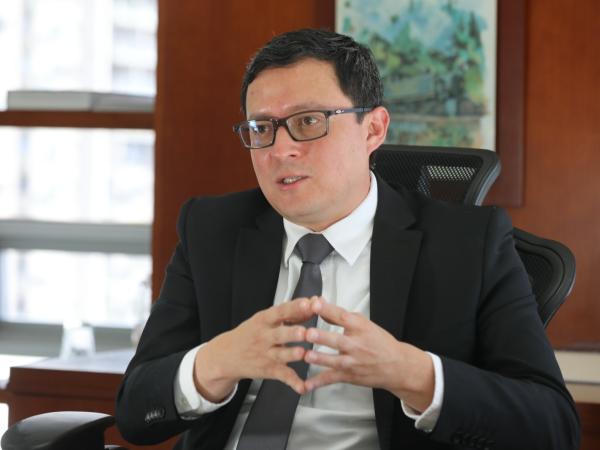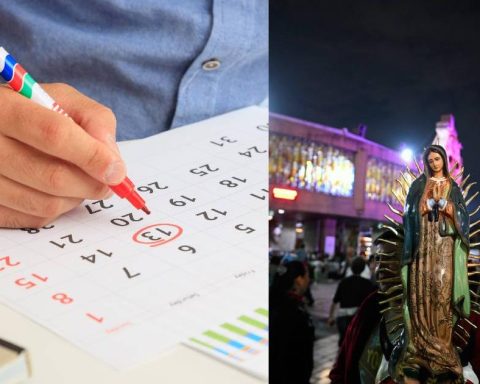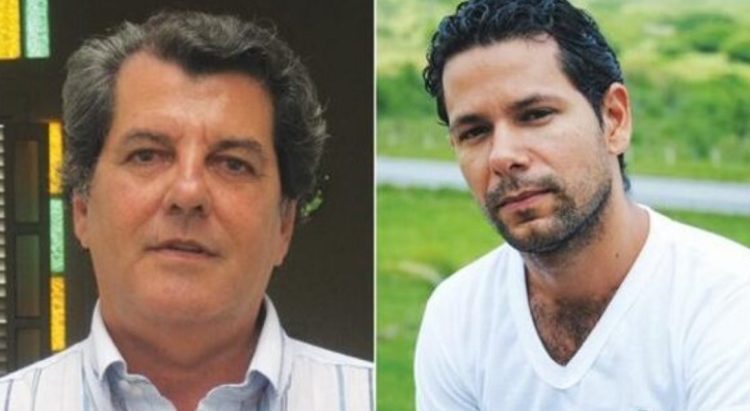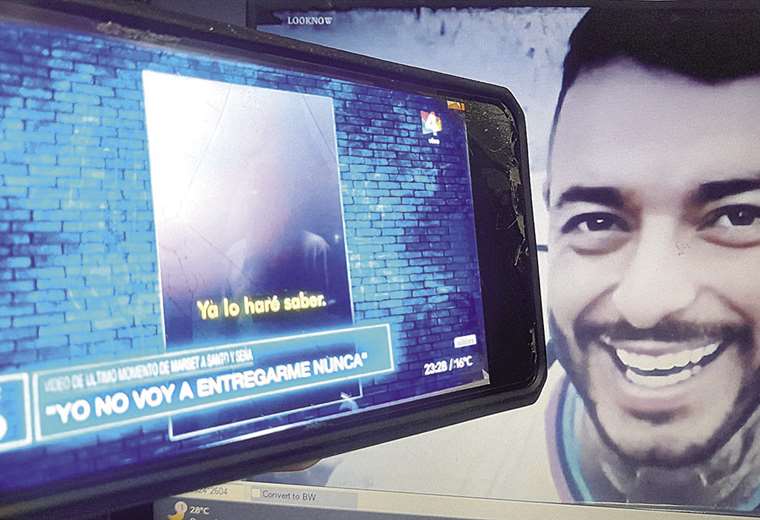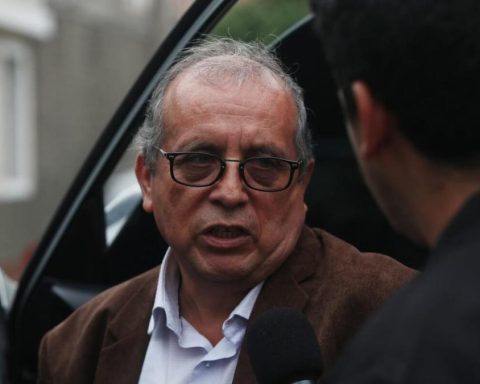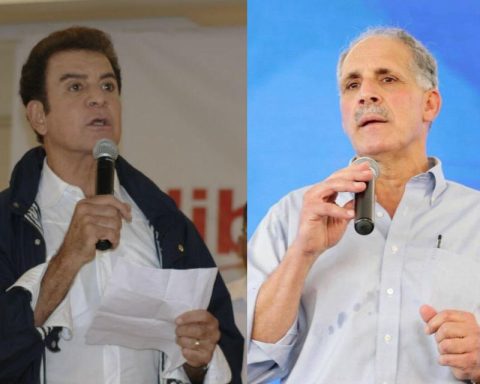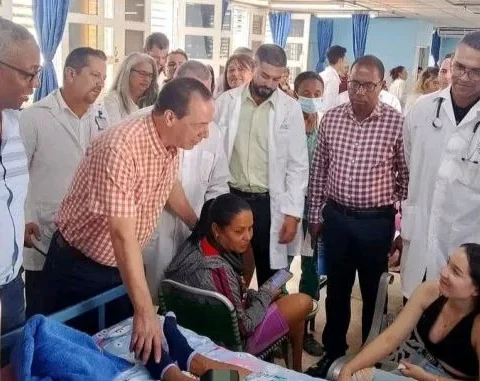In the area of concessions, the National Infrastructure Agency (ANI), an entity attached to the Ministry of Transport, is working on structuring more projects for all modes of transport, in addition to promptly delivering the 4G that have yet to enter the operation and maintenance stage and advancing on the 5G tendered.
In an interview with Portafolio, Francisco Ospina Ramírez, president of the ANI, spoke about the progress they have made and the challenges in fiscal matters to be able to advance in their work.
Also read: Guaranteeing PPPs and raising toll prices, some of the challenges of the Ministry of Transport
How have the projects under your charge progressed?
Today, the ANI has changed its portfolio. Initially it was very road-related, but through some adjustments we have managed to adapt the Agency and venture into many more projects beyond the road sector in an efficient manner.
However, particularly in the road sector, we have made some very interesting progress. This year we started with eight 4G road projects in operation and maintenance, and we have already completed four more projects, and we hope to deliver several more in the remainder of the year, such as Conexión – Norte and Cambao – Manizales. It is worth mentioning that one of these twenty-nine projects had its contract terminated early bilaterally: Pamplona-Bucaramanga, so there are really twenty-eight projects.
Furthermore, it must be taken into account that all the projects except one 4G project should have started the operation and maintenance phase, except for the Caribbean Highways. Of course, there were a number of difficulties in unblocking certain projects and it is this government that, despite all the noise and all the concerns, managed to put projects into operation and maintenance.
Has the Pamplona – Bucaramanga contract been settled yet?
In Bucaramanga-Pamplona we had an order from an arbitration award ordering us to terminate the contract, basically due to the impossibility of accessing the industrial roads by the concessionaire and as an agreement with the concessionaire we reached the formula for termination of the contract.
At this moment, 17 critical points on the road are being addressed, but unfortunately, the works initially planned in that contract are not being carried out. Now, the reversal stage, after which the liquidation will follow.
Are you interested in restructuring this project?
A concession project takes between three and four years to mature. At the moment we have neither private nor public initiatives revolving around this corridor. It is very likely that it will be transferred to Invías and the project may eventually be taken up by the ANI.
How has the Caribbean Highways project progressed?
At Autopistas del Caribe we hope to be able to, through differential rates for the population, have the continuation between Turbaco and Cartagena. Ultimately, there are 15.8 kilometers, which are used every day and in Colombia the road infrastructure must be paid for, its use, by the users themselves in accordance with Law 105.
You may be interested in: ANI prepares its concessioned airports to meet passenger growth
Caribbean Highways
Caribbean Highways
How are your 5G projects progressing? Have they been affected by budget cuts?
First, I would like to say that one of the great challenges we have with 5G is getting it up and running. A large part of the difficulties with 4G is that it did not get up and running on time due to environmental, property and social issues, and all of this generated an economic imbalance in some projects that led to the projects being unviable or even led to a great deal of litigation on the part of the concessionaires trying to find economic equilibrium again.
We have had a particular focus with the six 5G projects. We already have one project that is almost 10% complete in the construction phase: La Malla Vial del Valle, and the other five projects are either financially closed, which is an important milestone in these projects, or in the short-term construction phase, particularly in Buga-Buenaventura. This project is the only one that does not have formal financial closure today, but construction will begin in August.
And what about the projects that will be put out to tender? It has been said several times that they will be put out to tender but they are not. Why?
There is a reality in the road sector and it is that some 10-12 years ago, important decisions were made regarding strategic road infrastructure in Colombia. Perhaps this dynamic will not occur again on that scale, because the country’s strategic logistics corridors are already being connected. There are probably some corridors that need to be reinforced, a third lane on some roads, well, the natural evolution of logistics and transport, but not on that scale that was experienced 12 years ago.
At the moment we are working on six 5G projects and the specifications for the two large-scale highway projects will most likely be ready this year. We are talking about Villeta – Guaduas and Popayán – El Estanquillo, which we hope will have the specifications in SECOP between October and December for eventual award.
We saw that La Dorada – Chiriguaná was also to be awarded at the end of the year, but it was moved to 2025, why?
The approval of the National Council for Fiscal Policy, CONFIS, is pending. We hope that this meeting or approval will take place soon. Once the CONFIS is held and we have the minutes, the ANI is fully ready to publish the process.
What message do you have for banks and developers who want to launch more projects soon?
The first is that the public policy of the National Government had to be reflected in the concession projects. These projects naturally came from a materialization in the past, they came with certain policies, we understand and abide by Law 1508, but naturally certain situations had to be adapted to the public policies issued by the National Government, for example, what concerns tolls, increases and so on.
The second thing is that the projects we have been structuring are materializing. We also had a medium-term spending framework from the ANI, which is materializing the CONPES that have been emerging and naturally, to the extent that these CONPES make the resources available to us, the projects will be published.

The Golden One – Chiriguaná
ANI
Have you considered changing the operation and maintenance model of your projects to optimize resources?
Tolls are part of the financial model with which these projects are structured. There are projects where the only source of income is tolls – Private Initiatives -, there are others where future payments are combined with tolls – App -.
These decisions about which new tolls were to be installed, and what the rates for those tolls were, were naturally made from the structuring of the projects. What we are working on with concessionaires and others is trying to understand the way in which those contractual rates can be implemented generating the least effect on the communities, mainly those that live close to them, through differential rates.
However, we must be clear, from our contractual responsibility, the tolls cannot be withdrawn, the tolls cannot be modified (in the rates) without there being an alternative source of payment for this infrastructure, because I repeat, they are not profits of the concessionaires, but are part of the financial model and the income expected by the concessionaire and by the State when it was approved at the time.
It is important to note that many of the 4G projects contemplate that once the functional unit enters into maintenance operation, the toll is installed and the contractual rates are updated. This means that, as the projects are being completed, some rates must be installed or increased.
Can see: Maria Constanza Garcia was sworn in as Minister of Transport

4G routes
ANI
In Colombia, we currently have 119 toll booths installed by the ANI and we should have 144 according to the contractual models for 4G and 5G once the works are finished, meaning that the progress in the works is equivalent to the installation and the increase in some toll rates.
The transport sector, through the transport infrastructure planning unit, is carrying out a consultancy to determine how or in what way we could intervene in the system so that, with alternative sources of income, with other options, these resources can be compensated to the concessionaires.
Regarding new forms of financing, how is the collection of property value added tax progressing?
Both the ANI and Invias are subject to the collection of valuation for road works, in this sense we, as the ANI, will be a relevant actor in this structuring and collection of valuation, particularly for the Cartagena-Barranquilla section, which is an active subject.
To implement the tax, a property survey is required and here we have some difficulties, because the cadastral situation in Colombia, in these rural areas, is outdated. Initially, in this section from Barranquilla to Cartagena, 80,000 properties were considered and today it is believed that there are around 240,000 properties subject to the collection of value added tax. All of this has caused us some delays in the implementation.
It is estimated that around 50% of the resources could return to the region to be reinvested in the same region and this is very relevant, it is part of the policies of the Ministry of Transport for its application.
This is necessary to be able to continue reinvesting in infrastructure projects. In 4G projects this year we have had more than 30,000 direct jobs related to infrastructure development and we need alternative sources of financing so that new projects can be made viable. Today the National Infrastructure Agency has a greater capacity to structure projects than the State has the capacity to award.
From this position, what are your challenges?
The biggest challenge is the fiscal one, regarding the financial possibilities to materialize these projects. When the package of 29 4G concessions was awarded, a large part of the App quota that the State has was taken up.
This government increased the APP quota from 0.6 to 0.8, this increase in the quota opened the possibility that new projects can be awarded and thanks to this we have a very high probability of awarding El Estanquillo – Popayán and Villeta – Guaduas with a large contribution of public resources.
Paula Galeano Balaguera
Portfolio Journalist
